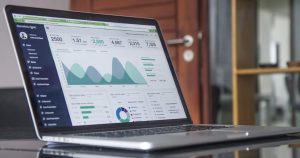
There is an old adage that I heard when I started working, in the late 90’s, and that is: “What gets measured gets managed”. There is a whole lot of truth in that statement that even my 20-year-old self, understood at a basic level. This is now even truer than it was all those many years ago. In today’s day and age, companies are collecting and using data at alarming rates. Why? Because they use it as a tool, a very powerful tool, one that allows them to increase their profits and also one you can use.
If you look at the concept of data it’s just information, impartial numbers, and facts that don’t lie, they just give us a value of a measurement. From temperature to the speed that you’re driving as you pass the little old lady on the highway. This information doesn’t care about anything, it is, simply, what it is. It is merely a representation of a fact in time and by itself is nothing more and nothing less. But put that piece of data into context and you, all of a sudden have a picture. Take for example the temperature, if it’s below freezing you know that you will need a jacket and that it is probably winter.
The world we live in has become one big data collection, from the likes of Facebook and Google all the way to your local grocery store chain. Data collection has permeated almost every area of our lives, especially our digital lives. News stories, talk about data collection and its darker side, at least they have recently when it comes to social media and the reality is that may be true. There is also a positive side to the story and you can take advantage of that.
This is where the power of data really comes, it paints a picture of reality. Scientists use this to come up with and support their theories and ideas. Companies use this information to become more profitable (to sell you more shit). The biggest thing I find with data is the reality of the digital picture it paints. This is incredibly important to you as an individual when it comes to your financial lives, it can show you the reality of your financial lives in an impartial way.
This is a very important distinction because impressions and perceptions within humanity and how we live and work don’t always reflect reality. This is true across the full spectrum of our lives, especially our financial lives which are rooted in numbers and math. Take for example what you spend your money on, for your average person and there will be a discrepancy between the reality of their spending and what they think it is. I know this was the case for me when I first tabulated all of my spending, truthfully, I was a little taken aback by the results.
When I first started this site those many moons ago (one of these days I’ll get the old posts back) I tracked every single penny I spent, from cash to bills all the way down to those really annoying ATM fees. What did this exercise accomplish? Well, it reaffirmed my intense dislike of collecting and tabulating data by hand, but what it also managed to do is allow me to start seeing patterns in my spending that I didn’t realize were there. Since it was so long ago I no longer have the original figures, but I remember a couple things jumping out at me: having a car is REALLY expensive, eating out even at fast food places really starts adding up quickly and the really big one how much of an impact interest makes. Now some of these lessons are ones that I didn’t take to heart as much as I should have but I go back to this exercise whenever I want to make sure to keep a tight rein on my financial life.
One of the things that I’ve started doing with this reboot is tracking all of my spending and income down to the penny again. The whole idea here is to work with the data, using it allows you to track and compare to a baseline of what you were planning. Then you can see what happened and what adjustments need to be made. For me, this is allowing me to keep tabs on our grocery spending, which seems to have been getting a bit out of hand unnecessarily. Course corrections are much easier to make from a financial perspective when you look at the facts.
To come up with a theory you need to have some evidence first, then once you have your theory you can empirically test it, this is what the scientific method is rooted in. It is also how I’m approaching this whole reboot financially and with the site. Data paints a picture of your financial life rooted in reality where the numbers cannot lie and you can’t imagine things away. In the end, what is measured, CAN be managed.


